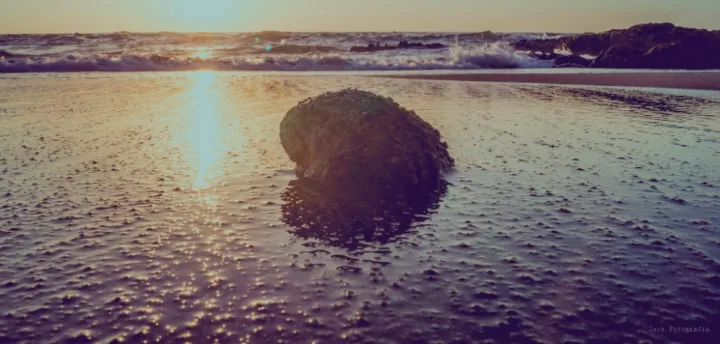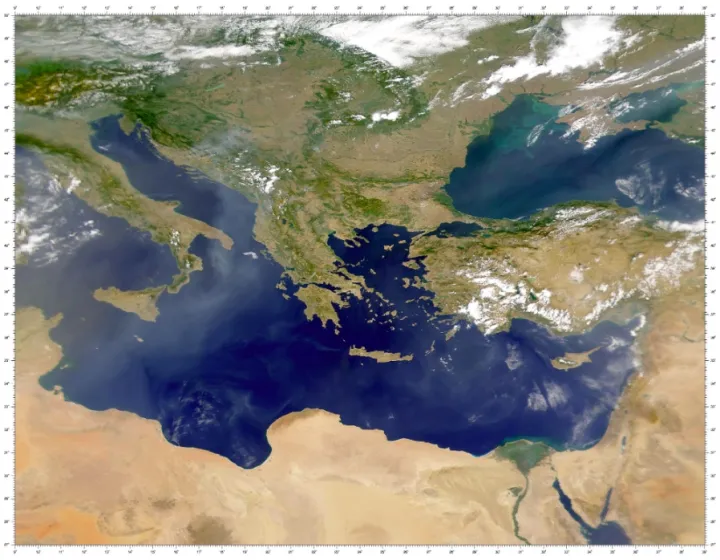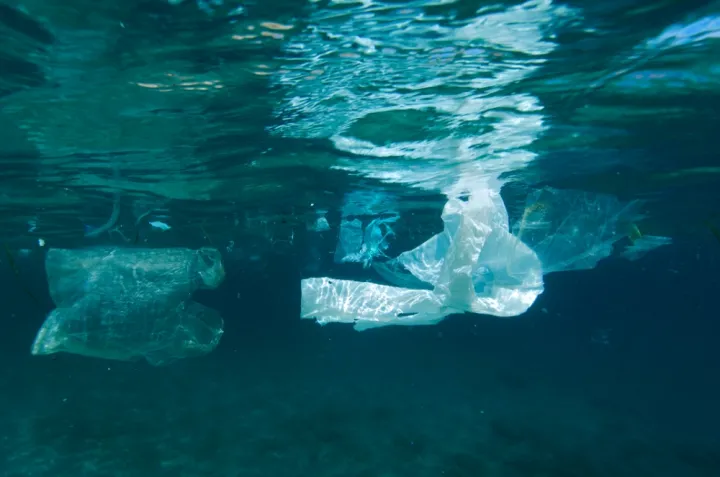
How Laws Around the World Help Improve Ocean Health
Introduction
Solving environmental problems often starts with small groups of people working to make things better. But to sustain and scale up environmental successes often requires government support. The Ocean Portal has joined with Earthjustice to tell the stories of these efforts, so that others may learn from them. Here are just a few examples from around the world—Mexico, Chile, the Mediterranean, and the Philippines. Stay tuned as we add more over time.
Reef Protection in Cabo Pulmo, Mexico
The Gulf of California has long been renowned as one of the most productive areas in the world. However, in recent decades, many Mexicans relocated to the Gulf coast to work in the burgeoning fishing and tourism industries, and over time, fish stocks dwindled and collapsed. Regulations were not enforced, so that the fishery sector grew with essentially no controls. As a result, total production dropped, and fishers had to search further and harder to find fish.
Fishing communities in Baja California Sur, like the small village of Cabo Pulmo, were threatened as fewer and fewer fish were landed. Keystone species like sharks, the marine ecosystem’s apex predators, disappeared, and coral reefs became covered in algae and experienced frequent bleaching events. Conflicts erupted over access to ever-more-limited resources.
The citizens of Cabo Pulmo worried about whether any ocean and coastal resources would be left for their children. Ultimately, they decided to take action and work to establish a protected area around Cabo Pulmo’s reef—banning fishing to allow the reef and fish stocks to recover. Using the Mexican General Law for Ecological Equilibrium and Environmental Protection (LGEEPA), the village of Cabo Pulmo, supported by international scientists, lobbied the Mexican government to have the reef legally declared a Natural Protected Area. In 1995, they were successful.
A decade after the protected area was established, scientists were astounded by the results:
[Fish] were so abundant that we could not see each other if we were fifteen meters apart. We saw more sharks in one dive at Cabo Pulmo than in 10 years of diving throughout the Gulf of California!
- Enric Sala, National Geographic Explorer in Residence
Protected from human exploitation, the coral reef of Cabo Pulmo became once again an oasis of rich biodiversity. Fish biomass increased by 460%, similar to that of pristine coral reefs that have never been fished. In addition, whale sharks, manta rays, humpback whales and endangered sea turtle populations rebounded. Today, divers from around the world visit Cabo Pulmo to see the extraordinary marine life there, and local fishers reap the benefits of replenished fish stocks that swim outside the Natural Protected Area. Local incomes have improved substantially.
The success of Cabo Pulmo is recognized worldwide as living proof that good ocean management can restore marine biodiversity and support local economies. The story of Cabo Pulmo National Park demonstrates how local leadership and strong community involvement can successfully use federal laws to protect vital resources. While this process was not easy for the people of Cabo Pulmo, the ecological and economic results of their tenacity have been stunning.
For Cabo Pulmo, the main legal outcomes to date are:
- An official legal framework for Cabo Pulmo National Park was established in June of 1995, when the Mexican government promulgated a decree creating Cabo Pulmo National Park. Today, Cabo Pulmo National Park follows the management plan officially established in 2009.
- New institutions, and new monitoring and enforcement system were established, including designation by the Mexican government of a Park Director in 2007. The local community is very involved in the Park’s monitoring and enforcement system.
- International recognition, including the declaration of Cabo Pulmo in 2004 as a World Heritage Site by UNESCO. In 2008, Cabo Pulmo was designated a Ramsar wetland site of international importance.
More details on the history of these legal protections can be found here.
Sustainable Artisanal Fisheries in Coastal Chile
With 4,270 km (2,653 miles) of coastline, Chile is well known for its abundant seafood and ranks eighth in the world for wild capture fisheries. The artisanal sector is responsible for most of the catch, surpassing industrial fisheries by a wide margin. In 2012, Chile had 86,132 artisanal fishers, all of whom are highly dependent on the health of the fisheries for their livelihoods. Shellfish collected near the shore (such as snails, sea urchins, limpets, and mussels) are especially important, representing 55% of the fishing effort. This is largely due to the particularly high value of some shellfish, such as the loco (Concholepas concholepas, often called the Chilean abalone, although it isn’t actually an abalone) in the international market.
The loco is found along the entire coast of Chile. Starting in the 1970s, due to an exploding demand for locos in Asia and rising prices, more and more Chilean workers, both artisanal fishers and the unemployed, engaged in artisanal shell-fishing. When a certain stock was depleted, fishers moved on to the next one, resulting in numerous conflicts between local and migrant fishers. Loco fever, ‘la fiebre del loco’, overtook the Chilean coast.
From 1974 to 1981, the fishery operated under an open access regime, with no controls. The catch reached a peak 24,800 metric tons (mt) annually, compared to the 3,000-6,000 mt per annum before 1974. But the loco fishery could not support such aggressive harvesting for very long, and stocks were quickly depleted. Between 1981 and 1988, overfishing led to a significant decrease in the quantity and quality of landings.
Fearing a total stock collapse, the Chilean government set Total Allowable Quotas, shortened the fishing season, and implemented size limits, but with weak enforcement these traditional regulatory tools failed to stop the decline in stocks. Finally, the government implemented a nation-wide closure of the fishery in 1989, banning all loco fishing.
In the middle of the crisis, some fishermen, backed by scientists, came together and negotiated with the government to receive exclusive rights over the bottom dwelling resources in a defined near-shore marine area. In return, they were made responsible for the good management of those resources, through regular scientific assessments and a strong internal enforcement system. The success of this experimental model inspired other fishermen. This model quickly spread along the Chilean coast, triggering the sweeping legal reform introduced by the Chilean government in 1991.
Today, around 17,000 artisanal fishermen co-manage over 550 distinct areas covering over 2,500 miles of coastline. These areas are known internationally as TURFs, Territorial Use Rights in Fisheries, a form of area-based exclusive use right. The Chilean case is a flagship example of the success that such approaches can have in conserving fishing resources and helping ensure sustainable livelihoods for fishing communities.
The major legal outcomes are:
- A new legal framework that reformed Chile’s fisheries management was created through the establishment of territorial user rights, also known as area-based exclusive use rights, for the exploitation of benthic (bottom-dwelling) species.
- A new approach to fisheries organization was put in place that fosters the creation of fishing associations that are directly involved in the co-management of fishing resources.
More details on the legal history of Chilean TURFs can be found here.
Reducing Pollution in the Mediterranean Sea
The Mediterranean Sea has played a central role in the development of civilization. A densely populated area, the Mediterranean coastal areas are home to a third of the population of the 22 bordering countries, about 640 million people. Roughly 175 million tourists visit annually.
Biologically, the Mediterranean Sea has many species that are unique to the area. The eastern and western parts of the sea are distinct in their geology, oceanography and biodiversity, so that the Mediterranean hosts a variety of very different ecosystems. The Mediterranean Sea is also one of the most vulnerable marine regions on the planet. In particular, as a semi-enclosed sea, the Mediterranean is very sensitive to pollution. The renewal rate (the time it takes for the water to be replaced) is very slow—80 to 90 years—which accentuates the effects of pollution. Heavy metals and persistent organic pollutants contaminate marine habitats and accumulate up the food chain, and eutrophication from excess nutrients causes periodic algal blooms. Together, these have caused severe declines in fish stocks and biodiversity, threatening the sustainability of both the fishing and tourism industries.
Land-based pollution constitutes approximately 80% of the total pressure exerted by humans on Mediterranean marine ecosystems. Most pollution stems from five economic sectors: energy, agriculture, industry, transportation, and individual households. Pollution comes not only from coastal areas but also from inland areas via rivers, all of which contribute to the pollution of the Mediterranean.
Concerns about pollution in the Mediterranean Sea grew sharply in the 1960’s and 70’s, spurring Mediterranean countries to negotiate a legal framework to support coordinated national and between-country actions to reduce pollution and share information and technology. The Mediterranean Action Plan (MAP) was adopted in 1975, followed in 1976 by the Convention for the Protection of the Mediterranean Sea against Pollution (Barcelona Convention). These general frameworks were more specifically detailed in 1980 with the Protocol of the Mediterranean Sea against Pollution from Land-based Sources (LBS Protocol). The success of the legal system arising from the 1976 Barcelona Convention lies in its ability to leverage complex collaboration strategies among countries with different legal, political, and economic conditions. The Barcelona legal system, including the Convention and its seven Protocols, and the European Union directives and programs that have resulted, have made possible a much more effective level of collaboration.
Today, almost 40 years after the adoption of the Barcelona Convention, major challenges remain: the Mediterranean is still one of the most polluted oceans in the world. Yet the Convention and the legal framework and programs that flowed from it have leveraged significant pollution control successes. For example, for the eight Mediterranean states that are members of the European Union (EU), on average, 58% of the wastewater receives secondary treatment and 66% receives tertiary treatment. Discharges of six major industrial pollutants (Mercury, Cadmium, Lead, Zinc, Chrome, and PAHs (polycyclic aromatic hydrocarbons)) have been significantly reduced.
The major programmatic and legal outcomes are:
- A common strategy now exists to address land-based pollution through the MED POL Program.
- The Protocol has been implemented through the Strategic Action Programme (SAP), National Action Plans (NAPs), and financing plans.
- The 1991 Wastewater Treatment Directive must be implemented by eight Mediterranean states that are members of the EU.
More details on legal efforts to reduce pollution in the Mediterranean can be found here.
Banning Plastic Bags in the Philippines
Plastic bags are ubiquitous: they can be seen blowing across parking lots, poking out of landfills, and drifting in the middle of the Pacific Ocean. As of 2014, the Earth Policy Institute estimated that a trillion single-use plastic bags are used every year—nearly two million per minute! A plastic bag takes 400 to 1,000 years to break down in a landfill, releasing carcinogenic chemicals into the environment as it does so. Many plastic bags, however, go through this breakdown process in places other than landfills—including the ocean. Almost 90 percent of floating marine debris is plastic, which is especially harmful to marine life because it accumulates and concentrates toxins in the ocean. Marine debris presents a grave threat to the environment, wildlife and human health. Plastic breaks down into small particles called microplastics that end up in the food chain, harming wildlife and posing a risk to humans that eat those animals.
The Philippines has a very high level of plastic bag consumption, and its coasts and beaches are littered with garbage that contaminates the marine environment and decreases the value of coastal properties. In addition, the Philippines faces a unique danger: deadly flooding. In 2009, a tropical storm brought heavy rains that caused enormous flooding in which approximately 400 people died. Drainage systems that should have helped alleviate the flooding didn’t function properly. Cleanups after the disaster revealed that garbage—primarily plastic bags—was responsible for blocking the drainage systems and making the typhoon so deadly. With this understanding, NGOs and policy-makers began advocating for plastic bag bans. As climate change exacerbates extreme weather events in the Philippines, the importance of bans has gained urgency.
Muntinlupa City was the first local government in Metro Manila to implement a ban on plastic bags in 2011 (officially doing so via Ordinance 10-109). Benefits were readily apparent when the next typhoon hit and resulted in notably less flood damage. Ordinance 10-109 has had a domino effect, with other cities following suit with their own plastic bag bans.
To date the legal outcomes are:
- Plastic bag bans have been initiated, adopted, implemented, and enforced by governments across the Philippines.
- National regulations have been proposed in the House of Representatives and the Senate to harmonize and create a general ruling on plastic bag use nationwide.
More details on the legal efforts to ban plastic bags in the Philippines can be found here.




